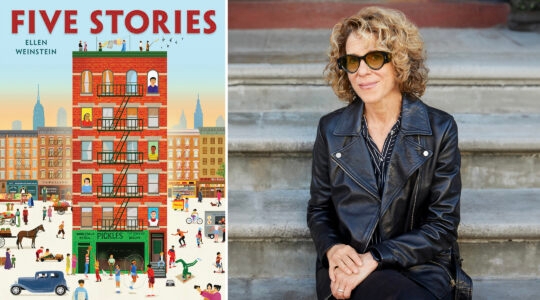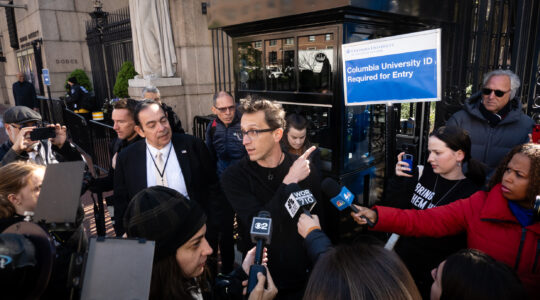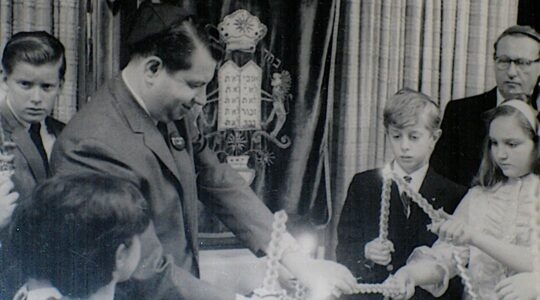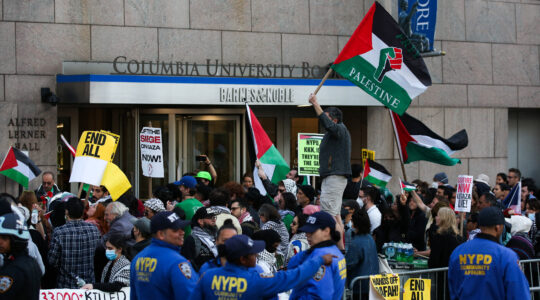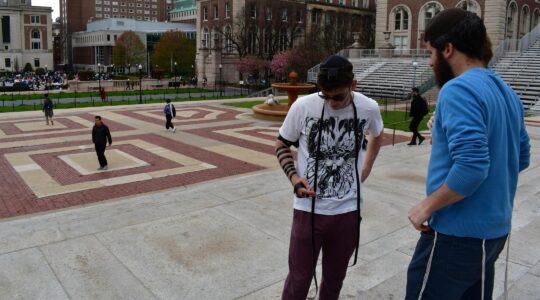The Meirov family of Central Asia followed a familiar path to Central Queens in recent decades.
Residents of Uzbekistan for more than 1,000 years (according to family lore), a few dozen Meirovs left for Israel in the 1970s. In the early 1980s they resettled in Forest Hills, where one relative and tens of thousands of other Jews from Uzbekistan and neighboring Soviet republics — better known as Bukharian Jews — had already made their homes.
The distinctive Central Asian character of Forest Hills and adjacent Rego Park had earned that area the nickname “Queensistan.” One branch of the close-knit Meirovs settled within a few blocks of each other.
But within the last five years, several members of the family have moved two miles away, across Flushing Meadows Park, to Kew Gardens Hills.
They are not alone. In a demographic shift that is quietly remaking the Jewish character of Kew Gardens Hills, young Bukharian families from Forest Hills/Rego Park have been flocking to the area, drawn largely by lower housing prices and by a Jewish milieu that is more intensely Orthodox and Sephardic in character.
Twenty years ago, there was talk of Kew Gardens Hills becoming “the next Flatbush.” The Rabbinical Seminary of America (aka “Yeshivas Chofetz Chaim”) had moved from its longtime home in Forest Hills to Kew Gardens Hills, and the Lander College for Men, a division of Touro College, established a branch there. This led to an increasing number of young, black-hat, “yeshivishe” families settling in Kew Gardens Hills, taking advantage of housing prices that were then cheaper than those in Brooklyn at the time.
Now, Kew Gardens Hills has become the new Rego Park, as many young Ashkenazi couples have been priced out, replaced by Bukharian families in search of homes for their growing broods.
Shlomo Meirov, 38, who owns a real estate firm that caters to many of the Bukharians who are looking to move, established a Sephardic prayer minyan in an Orthodox Forest Hills synagogue when he lived there a decade ago. He started a similar one recently in rented space in a Kew Gardens Hills congregation. It drew a near-capacity crowd the first Shabbat. “All different people, many younger-generation Bukharian,” he said. “All through word of mouth. I told a few friends. More and more Bukharians are coming to Kew Gardens Hills from Forest Hills and Rego Park.”
A Perfect Storm
Local politicians have taken note of the changing demographics, as the second and third generation of the original Soviet emigres have come of age and begun establishing families of their own.
“This was a perfect storm” of circumstances that led to Bukharians moving in from Forest Hills, said Tim Thomas, chief of staff of State Assemblyman Daniel Rosenthal (27th District). “Kew Gardens Hills never needed to advertise to bring Jews into the area,” a reference to its proximity to Forest Hills and Rego Park.
Rosenthal is among several local politicians who have worked in recent months to enact changes in zoning laws more favorable to the community’s large families and expanding synagogues.
For Meirov, the move from Forest Hills to Kew Gardens Hills was for the sake of his school-age children.
Support the New York Jewish Week
Our nonprofit newsroom depends on readers like you. Make a donation now to support independent Jewish journalism in New York.
“My kids” — students at nearby day schools — “were riding to school on not-full buses,” he said between calls at his Olam Realty Group firm. The children’s friends’ families had already moved to Kew Gardens Hills and were taking other buses to school. “They didn’t have any friends” their age left in Forest Hills, Meirov said. No study partners after school, no play dates on Shabbat.
A friend of Meirov’s, who asked that his name not be used, gave a similar reason for his own family’s move from Forest Hills to Kew Gardens Hills. “There are a lot more opportunities for [my] children to connect with [other] children who are religious.”
Adam Sionov, community liaison for City Councilman Rory Lancman, was drawn to Kew Gardens Hills not from Forest Hills but from Borough Park. His emigre family, from Central Asia, moved to Queens because of “the pull” of its Bukharian numbers. And they chose Kew Gardens Hills, he says, because the Bukharian community there is younger and more religious than in Forest Hills and Rego Park (he cited “the Torah culture”) and because the housing there is less expensive.
Sionov, who is active in his adopted neighborhood’s Bukharian community events, says he and his growing family intend to stay put, a feeling he says is shared by other members of his community who made the move from Forest Hills-Rego Park. He says Bukharian families he knows feel fully integrated into the neighborhood’s still-dominant Ashkenazi culture.
The strip of kosher food stores, Judaica shops and other Jewish-specialty firms along Main Street in Kew Gardens Hills now draw customers from throughout the region. “I’m a destination business,” says Bruce Becker, co-owner of the quirky Max & Mina’s ice cream emporium.
“Without the Bukharians there wouldn’t be much of a community” in Kew Gardens Hills, said Yaakov Serle, a longtime resident of the neighborhood and a founder of the weekly Bukharian Link newspaper, which is based in Kew Gardens Hills.
As a sign of the growing Bukharian presence in Kew Gardens Hills, the Hillel at Queens College there recently established a Center for Bukharian Jewish Research and Identity to connect to the growing number of Bukharian students enrolled at the school.
Mixed Blessing
The demographic shift has been a mixed blessing for parts of the neighborhood’s Jewish community. While Bukharian institutions are thriving, attendance at old-line Ashkenazic ones — such as Young Israel — is visibly down. The dwindling population of Conservative Jews is feeling marginalized, Rabbi Moses Birnbaum, spiritual leader of the Conservative Jewish Center of Kew Gardens Hills, the neighborhood’s sole non-Orthodox house of worship, told The Jewish Week. At one time, three Conservative synagogues were based there.
Rabbi Birnbaum says he offered to let a new Orthodox minyan meet in his building on Shabbat, but the participants said they didn’t want to be seen entering a non-Orthodox congregation.
While exact Jewish population figures for the neighborhood are not available, UJA-Federation’s 2011 citywide demographic study found that the Jewish population in the Kew Gardens Hills/Jamaica/Fresh Meadows area had already “increased 8 percent” since 2002, the year of the last previous survey. The survey did not distinguish between square-mile Kew Gardens Hills and the pair of bordering areas; Jewish leaders in the neighborhood estimate the number at around 40,000 and growing. (Growing numbers of Chinese families moving in from nearby Flushing have also affected the neighborhood’s demographics.)
Members of the Bukharian Jewish community say some 70,000 Bukharian Jews live within a 10-mile radius of Kew Gardens Hills.
It’s a question of simple “proximity,” says David Pollock, associate executive director of the Jewish Community Relations Council. “They want to be as close as possible to their [original Forest Hills-Rego Park] community.”
Support the New York Jewish Week
Our nonprofit newsroom depends on readers like you. Make a donation now to support independent Jewish journalism in New York.
Within Kew Gardens Hills, Bukharians still constitute a minority, though a sizeable one, according to observers. “I would say the neighborhood is 60-40 Ashkenazi,” said Rabbi Yoel Schonfeld, second-generation spiritual leader of Young Israel of Kew Gardens Hills, the area’s oldest Orthodox congregation.
The Bukharian presence in Kew Gardens Hills — groceries and bakeries that serve unique Old World culinary needs, and several synagogues and minyans, with a few more under construction — is not yet as visible as in Forest Hills. Few businesses, even those catering to a Bukharian clientele, post signs in Cyrillic, and the Russian language is rarely heard on the streets. Meirov says the Bukharian residents of Kew Gardens Hills tend to be younger, better educated and more religious than their parents and grandparents, who have remained in Forest Hills-Rego Park. And they are more comfortable in English than in Russian.
Young Bukharian Jews, members of the community say, are more willing than their Ashkenazic contemporaries to move into modest starter homes, while the older, wealthier Bukharians have drawn attention for building the oversized “McMansions” usually associated with Forest Hills and Rego Park.
The neighborhood has not witnessed the type of internecine divisions that have characterized relations among Orthodox Jews in other parts of the city, said Rabbi Hayim Schwartz, executive director of the Rabbinical Seminary of America. “All the rabbis work together.”
Many credit the founding rabbi of Young Israel of Kew Gardens Hills, Rabbi Fabian Schonfeld, who now serves in an emeritus role, with setting a tone for religious cooperation beginning in the 1950s.
“My father welcomed diversity,” Rabbi Yoel Schonfeld, who succeeded his father as spiritual leader of the Young Israel, said.
Under the influence of the senior Rabbi Schonfeld, Kew Gardens Hills has a single kashrut association, to which Ashkenazi and Sephardic rabbis belong, supervising all the restaurants and bakeries on Main Street.
Rabbi Fabian Schonfeld also cultivated strong relationships with the area’s political leaders, a skill that the Bukharian community is still developing.
Among its myriad religious-cultural-educational activities, the Chazaq organization, headed by Yaniv Meirov (one of Shlomo’s brothers), has mounted voter registration drives to encourage his community’s participation in the political process.
Forest Hills’ Future?
But a big question persists, one that in earlier years was asked about the Jewish character of neighborhoods like the Lower East Side: If housing prices continue to rise and young Bukharian families move away, will Forest Hills remain a strong Jewish community?
“It’s a question [the community must face], absolutely,” said attorney Warren Hecht, a longtime resident of the neighborhood as well as a board member and past president of the Queens Jewish Community Council.
Rabbi Shlomo Nisanov, spiritual leader of the neighborhood’s Kehilat Sephardim congregation, says some members of the Bukharian community are certain to leave, but “not as fast as the Ashkenazim. The cultural difference between the Ashkenazim and the Sephardim is that we are taught from a young age to stay around family,” in multi-generation dwellings or in homes near each other.
Support the New York Jewish Week
Our nonprofit newsroom depends on readers like you. Make a donation now to support independent Jewish journalism in New York.
His congregation has grown from 50 members to 600 in the last two decades.
Shlomo Meirov says he’s already heard of some Bukharians leaving for less-expensive areas on Long Island, but he says he remains optimistic.
“I’m happy I moved here,” he said. So are his kids. “On Shabbos, the houses are full of children [who live close enough to visit each other]. I encourage people [in his Bukharian community] to move here.”
Other members of his family will probably relocate to Kew Gardens Hills “eventually, sooner or later,” he said.
And his parents, who also are likely to end up there “eventually,” are pleased that the other members of their family who went there first are happily settled in Kew Gardens Hills.
Eventually, the Meirov mishpoche will all be together again.
